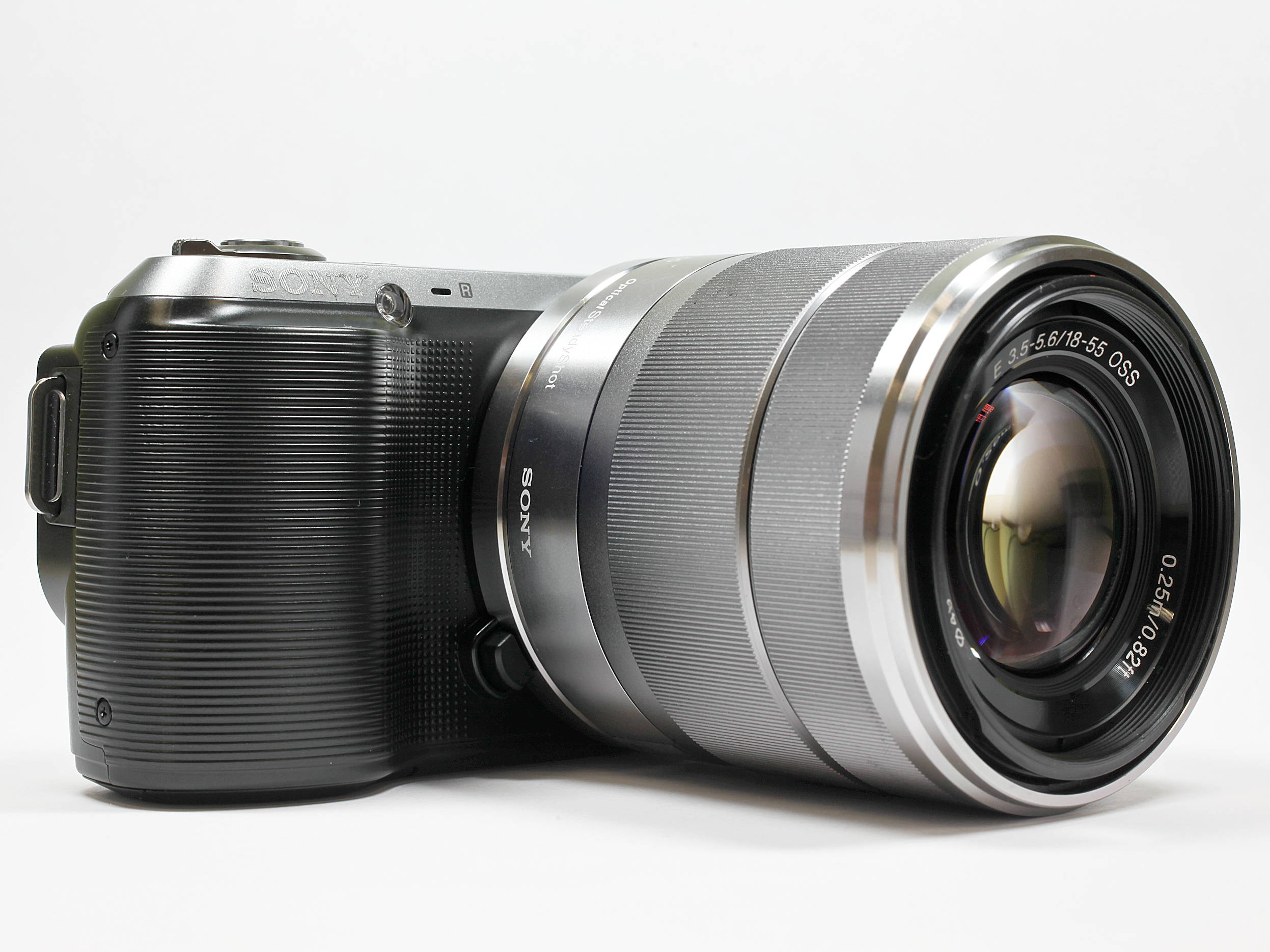Why you can trust TechRadar
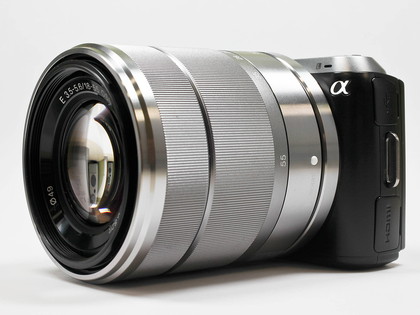
Strikingly small is how the Sony NEX-C3 first comes across. The body is no bigger than many compact cameras and weighing just 225g for the body only, it isn't much heavier either.
Much of the bulk is in the 18-55mm kit lens, which results in a slightly lens-heavy feel to the compact system camera, not helped by the absence of a deep enough finger grip to help support the weight of camera and lens.
Supporting and steadying the NEX-C3 is quite unlike conventional cameras, but once you take the time to adjust your grip, it becomes quite pleasant to use.
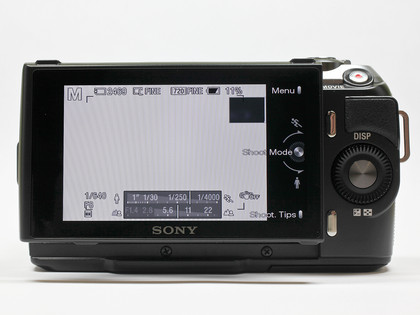
The plastics used in the construction are of high quality and feel quite sturdy, despite the light weight.
Sony has taken a minimalist approach to the NEX-C3's controls, with very few buttons keeping the rear clutter-free. The controls that are there are well placed, with the rotating dial providing access to adjustments in each menu.
The ability to customise the functions associated with the two 'soft' buttons to the right of the screen is a nice touch, providing quick access to your most commonly adjusted settings, such as ISO or metering.
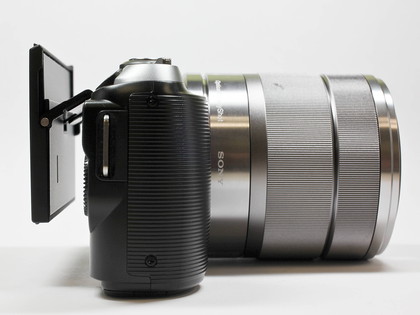
A one-touch video recording button is placed on the top right corner, which is occasionally a little to easy to accidentally press, causing the camera to record unwanted videos.
When the camera goes into power-saving mode, there's no indication that it's still switched on, apart from the position of the small power switch on top. This can occasionally lead to leaving the Sony NEX-C3 powered up, wasting battery power. It even produces the possibility of photographing, or even worse, videoing the inside of a camera bag or pocket. Some form of flashing light to signify that the camera is on would be very useful in preventing accidents.
The 1080mAh battery pack lasts well, providing power for around 350 shots during our testing.
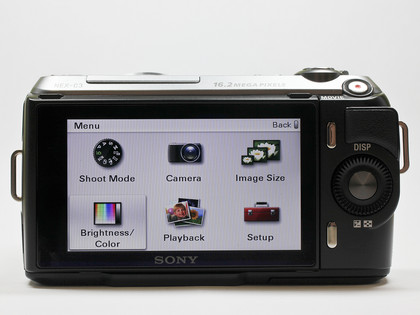
There is no viewfinder to speak of on the Sony NEX-C3. Composing images is done via the camera's 3-inch LCD screen, which can be tilted for use as a waist finder, or at around 45 degrees downwards for shots above head height.
Unfortunately the screen doesn't swivel, so it's less flexible when shooting portrait format images.
The 921,600 dot camera screen is bright, clear and has a very good anti-reflective coating, making it easy to view, even in very bright conditions. Menus are very easy to navigate and the text on screen is large and clear.
Focusing is blisteringly fast in good light, often locking onto a subject pretty much instantly. In low light it can be a different story. The camera will often struggle to lock on to a subject in the kind of lighting you'd expect to find in city centre establishments after dark.
The screen being unable to display an adequate image in very dark conditions compounds this issue. As a result, it can be hard to see what you are trying to focus on and how your shot is composed. The orange AF illuminator helps a little, but it doesn't seem to cover a wide enough area to be truly effective.
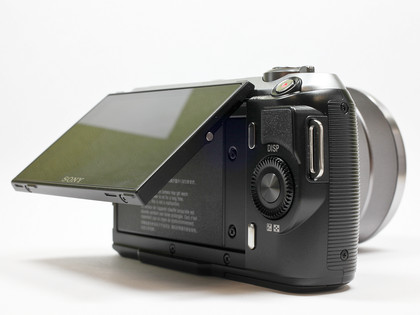
Plenty of exposure options to satisfy both casual and experienced photographers are included on the Sony NEX-C3. Casual users will find the Intelligent Auto, Scene Program and Picture Effect modes provide plenty of control in an easy and accessible manner. All the usual scene modes for portraits, landscapes, sports and more specific scenes such as twilight and sunset are there.
The picture effect mode has a variety of creative modes, including some favourites including selective colour modes, a toy camera effect and high-contrast monochrome.
More experienced photographers will feel at home with the program, aperture priority, shutter priority and manual exposure modes.
A wide range of options for controlling contrast and dynamic range are also provided. The D-R Auto mode automatically analyses each scene and brightens shadows or retains highlights as necessary.
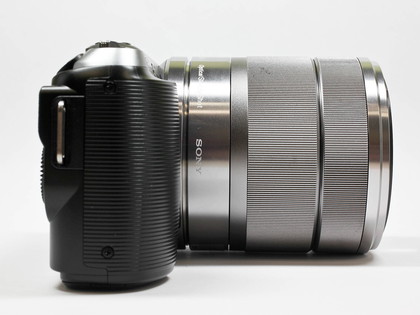
For times where the contrast is beyond what can be captured in one frame, an automatic HDR option takes three exposures and blends them to capture a much wider range of tones. For those who prefer to tinker with RAW files afterwards, three consecutive RAW frames can be recorded at different exposure values automatically.
These options work best with a tripod, but hand-held HDR is possible, so long as the light levels are bright enough and the camera is held steady.
High definition video recording at 720p resolution can be taken at up to 30fps. This feature is a little disappointing, since full 1080p resolution HD footage is rapidly becoming the standard for cameras at this level.
The Sony NEX-C3 also includes a sweep panorama mode, which merges several shots automatically in camera, and a 3D photo mode, that requires a compatible 3D television to view the results.
